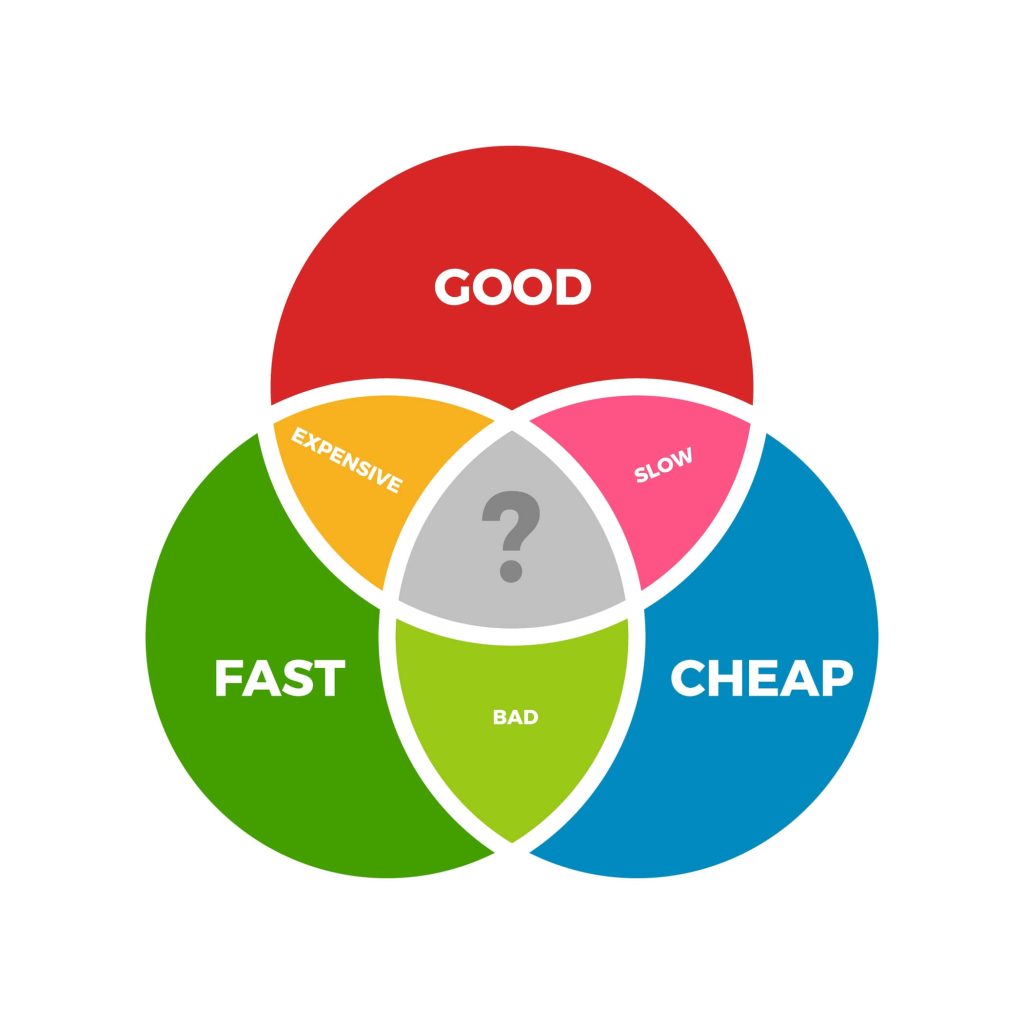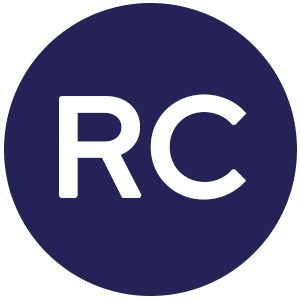We’ve all seen the iconic Venn diagram of three interlocking circles labeled “Fast, Good, Cheap.” A headline above the diagram says, “Pick Two.”
- Want fast and good? It won’t be cheap.
- Want fast and cheap? It won’t be good.
- Want good and cheap? It won’t be fast.

For decades, real-time location system (RTLS) platforms have offered a similar choice: “Fast, good, affordable” – pick two.
- Want fast and accurate? It won’t be cheap.
- Want fast and affordable? It won’t be accurate.
- Want accurate and affordable? It won’t be fast.
To truly deliver return on investment for hospitals, an RTLS needs to be all three: fast, accurate, and affordable. Until recently, no RTLS platform on the market has achieved that trifecta. But the Cognosos enterprise-wide RTLS can. Here’s how:
Fast
Legacy RTLS technologies (such as infrared, ultrawideband, and ultrasound) often require installing wiring throughout a hospital, including in patient care areas. Even lighter-weight technologies (such as WiFi and radiofrequency identification, or RFID) require some in-room equipment to function. Myriad regulations govern construction in hospitals: areas being worked on need to be taken out of service and wrapped in plastic to contain any contaminants, workers need to be dressed appropriately and properly trained, etc. Taking patient rooms out of service even for a day can cost a hospital thousands of dollars—and that’s before you consider the cost of the equipment these systems need to work.
On the other hand: Cognosos does not require any RTLS equipment to be installed in patient rooms, so they never need to be taken out of service. Our internet-enabled gateways are placed in existing hospital IT closets, our beacons clip into ceiling tiles, and our tags adhere to the hospital’s mobile assets. That’s it. Because Cognosos is so quick to install, its path to delivering ROI for a hospital is much shorter than what our competitors can promise.
Accurate
Legacy RTLS can be quite accurate, sometimes identifying an item within 10 centimeters. But when each hospital room contains an average of 13 pieces of equipment, that extreme level of accuracy isn’t necessary and does not deliver the ROI needed to justify the high startup costs of such systems. It’s also important to note that those systems aren’t always so accurate; if patient room doors are kept open—which is common in hospitals—legacy system signals are less accurate.
Although WiFi and RFID offer a lower installation cost than legacy systems, their accuracy is often quite low. The technology they use can go through walls and doors, even when they’re closed, resulting in “room-hopping:” an asset may appear in one room or floor when it’s actually in another.
Using Bluetooth Low Energy (BLE) technology, the Cognosos RTLS can achieve industry-leading accuracy with minimal infrastructure thanks to a proprietary cloud-based platform that uses machine learning to compare the information receives from the beacons and gateways with an internal reference network of the hospital. What’s more: By continually processing information from tags as they move around the hospital, Cognosos automatically updates that internal reference network. Say a hospital puts up a wall that turns one room into two. A legacy RTLS would require new construction to account for the change or risk becoming inaccurate—and that can get expensive. With Cognosos, in the best-case scenario, the system will correct itself. In the worst-case scenario, all that’s needed is the installation of an additional beacon or two.
Inexpensive
We’ve already addressed how legacy systems and even newer technologies can have prohibitive up-front costs. We also mentioned how, when physical changes to the hospital landscape happen, it can cost a lot of money to update an RTLS to reflect those changes. There are also indirect expenses to note. For example, WiFi RTLS was hailed as a less expensive and infrastructure-heavy alternative because it operates on a hospital’s existing WiFi network. But installation requires support from the hospital’s IT staff, taking them away from other responsibilities around the hospital. WiFi RTLS creates additional data traffic that can interrupt the hospital’s mission-critical functions that use that network. And a WiFi RTLS can open a back door to hackers, which puts the hospital’s sensitive patient data at risk. Those are costs which hospitals should take very seriously.
Cognosos, on the other hand, requires minimal hardware, no-construction installation, and inexpensive—if any—costs to update the RTLS when a hospital’s landscape changes. We don’t require any time on the part of your IT staff, because Cognosos operates off its own secure network, not the hospital’s WiFi backbone. The system is up, running, and beginning to provide value in a matter of weeks, not months.
Interested in learning more about how Cognosos can achieve this RTLS trifecta for your hospital? Read our related post, “Confidence: The Forgotten – But Critical – Variable in Hospital RTLS”



